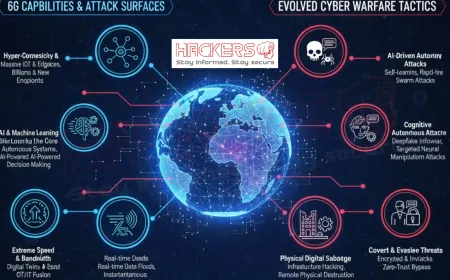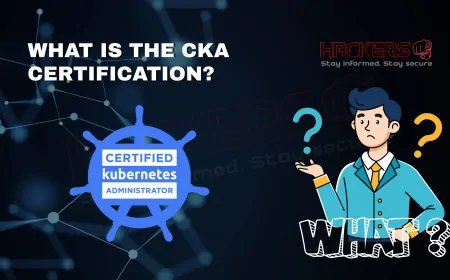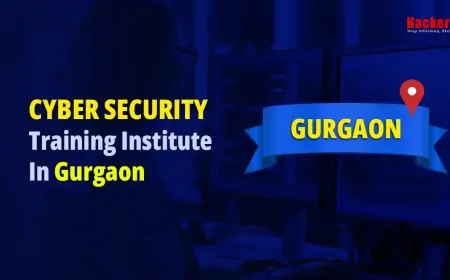Why Should Startups Adopt Cybersecurity Frameworks Early?
You just raised your seed round. Your app is live. Users are signing up. Investors are smiling. Then, one email changes everything. A hacker has your customer data. Your login page is down. Your co-founder’s email is sending ransom demands. You are 18 months old. You thought security could wait. You were wrong. In 2025, 60% of startups that suffer a major breach fail within six months. But here is the secret most founders miss: strong cybersecurity is not a cost. It is your unfair advantage. A cybersecurity framework, a simple roadmap to safety, can be adopted in a weekend and save your company. This blog explains, in plain language, what a framework is, why startups need it from day one, and how to start today. Your idea is brilliant. Let us make it unbreakable.
Table of Contents
- Introduction
- What Is a Cybersecurity Framework?
- Why Startups Are Easy Targets
- Benefits of Early Framework Adoption
- Top Frameworks for Startups
- How to Use NIST CSF (Step by Step)
- The Cost Myth: Security Is Expensive
- With vs. Without Framework
- Real Startup Wins and Losses
- How to Get Started This Week
- The Future of Startup Security
- Conclusion
- Frequently Asked Questions
What Is a Cybersecurity Framework?
A cybersecurity framework is a structured guide to protect your business from digital threats. Think of it as a playbook with best practices, checklists, and goals.
- It tells you what to do (like lock doors)
- It shows how to do it (with tools and steps)
- It measures progress (are you safer today?)
Popular ones include NIST CSF, CIS Controls, and ISO 27001. They are free or low-cost and scale with your growth.
Why Startups Are Easy Targets
Hackers see startups as low-hanging fruit.
- Rush to launch: security is “later”
- Small team: no dedicated IT or security person
- Cloud everything: misconfigured servers leak data
- Investor pressure: growth over safety
- Third-party risk: vendors, freelancers, APIs
- High value: user data, IP, funding
Google’s 2025 Startup Security Report: 1 in 3 startups hit by ransomware in first year.
Benefits of Early Framework Adoption
Security from day one pays off fast.
- Build trust: customers and investors love it
- Avoid fines: GDPR, CCPA apply from launch
- Save money: fixing later costs 10x more
- Attract talent: engineers want secure code
- Win contracts: enterprise clients demand frameworks
- Scale safely: grow without rebuilding security
A Y Combinator study found secure startups raise 23% more in Series A.
Top Frameworks for Startups
Pick one. Start simple.
- NIST Cybersecurity Framework (CSF): free, flexible, U.S. standard
- CIS Controls: 18 actions, prioritized, free
- ISO 27001: global certification, best for B2B
- OWASP Top 10: for web and app security
- Cloud Security Alliance (CSA) CCM: for SaaS startups
NIST CSF is the #1 choice for early-stage companies.
How to Use NIST CSF (Step by Step)
Five functions. One weekend.
- Identify: list assets (code, data, laptops, cloud)
- Protect: add passwords, MFA, backups, training
- Detect: enable logging, alerts, updates
- Respond: write a one-page breach plan
- Recover: test backup restore monthly
Free NIST template: download, fill, done.
The Cost Myth: Security Is Expensive
Wrong. Security is cheap at the start.
- Free tools: Google Workspace, 1Password, Let’s Encrypt SSL
- Low-cost: $5/user/month for MFA, $50/year for antivirus
- Time: 4 hours to set up NIST basics
- Vs. breach: $200,000 average for startups
Security is not a line item. It is insurance.
With vs. Without Framework
See the difference.
| Area | No Framework | With Framework |
|---|---|---|
| Passwords | Shared, weak | Manager, unique, MFA |
| Backups | None | Daily, offsite, tested |
| Access | Everyone admin | Least privilege |
| Training | Never | Monthly phishing |
| Investor Due Diligence | Red flag | Green check |
Real Startup Wins and Losses
Lessons from the front line.
- Win: Fintech startup passed bank audit in week 3 using NIST
- Loss: SaaS app lost $1.2M in IP after ex-employee download
- Win: Health app won HIPAA compliance with CIS Controls
- Loss: Edtech lost 50K users after database left public
- Win: AI startup raised $10M citing ISO 27001 prep
Security is a feature. Treat it like one.
How to Get Started This Week
No excuses. Do this now.
- Day 1: download NIST CSF Quick Start Guide
- Day 2: list all assets (laptops, AWS, GitHub, email)
- Day 3: enable MFA on all accounts (Google, AWS, bank)
- Day 4: set up password manager for team
- Day 5: turn on auto-updates and backups
- Day 6: write one-page incident plan
- Day 7: run first team security meeting
One week. One framework. Zero cost.
The Future of Startup Security
By 2030, security will be automatic.
- AI compliance: auto-generate framework reports
- Built-in frameworks: in AWS, Google Cloud, GitHub
- Security score: like credit score, for funding
- Investor mandates: no framework, no term sheet
- Global standards: one framework for all startups
The early adopters win. Be one.
Conclusion
Startups move fast. But speed without safety is suicide. A cybersecurity framework is not red tape. It is rocket fuel. It protects your users, your IP, your funding, and your future. NIST CSF, CIS, or ISO, pick one and start today. It costs nothing but a few hours. It saves everything. Investors ask. Customers expect. Regulators demand. And hackers? They move on to easier targets. Your startup is your baby. Secure it from day one. The best time to adopt a framework was at launch. The second best time is now.
Frequently Asked Questions
What is a cybersecurity framework?
A guide with best practices to protect your startup from cyber threats.
Do I need to be technical to use one?
No. NIST CSF has simple checklists. Anyone can follow.
Is NIST CSF free?
Yes. Download from nist.gov. No cost, no certification needed.
Can a solo founder do this?
Yes. Start with MFA, passwords, and backups. 2 hours max.
Will investors care?
Yes. 70% now ask about security in due diligence.
Is security a product feature?
Yes. “Built with NIST CSF” wins enterprise clients.
Do I need ISO 27001?
Not at first. Use NIST. ISO comes later for big contracts.
Can I outsource framework setup?
Yes. Consultants charge $1,000 to $5,000 for startup packages.
Is AWS secure by default?
No. You must configure it. Use AWS Well-Architected Framework.
Should I train my team?
Yes. 15-minute monthly phishing tests prevent 90% of breaches.
Do frameworks stop all hacks?
No. But they reduce risk by 80% and speed recovery.
Can I use multiple frameworks?
Yes. Start with NIST, add OWASP for web apps.
Is security a one-time thing?
No. Review quarterly. Update as you grow.
Do customers ask about security?
Increasingly. Especially in health, finance, and B2B.
Can I get certified early?
Not needed. Compliance (doing it) matters more than certification.
Where do I download NIST CSF?
nist.gov/cyberframework. Free PDF and tools.
Is GitHub secure enough?
With 2FA, secret scanning, and dependabot: yes.
Should I buy cyber insurance?
Yes, after framework. Insurers require it for coverage.
Can frameworks help with GDPR?
Yes. NIST maps directly to GDPR, CCPA, and HIPAA.
How do I start today?
Enable MFA on all accounts. Download NIST CSF. List your assets.
What's Your Reaction?


























































